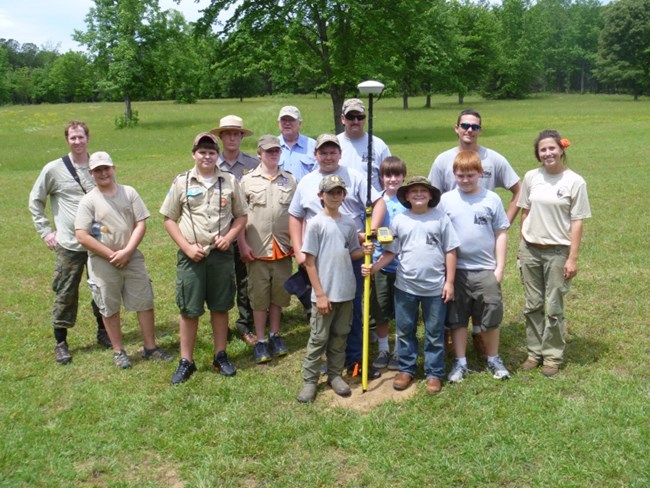Last updated: March 17, 2021
Article
Testing the Battle Field at Cowpens (COWP)

NPS, SEAC
In 2012, the Southeast Archeological Center (SEAC) undertook an archeological survey of 17 acres of Cowpens National Battlefield (COWP) in search of General Daniel Morgan’s January 16th camp. The survey consisted of two phases: a systematic shovel testing at 20 meter (m) intervals and a systematic metal detector survey using park service employees, local volunteers, and Boy Scouts.
A total of 141 shovel tests were excavated resulting in the identification of a one new prehistoric site. The shovel testing provided negative results concerning Revolutionary War materials. The metal detector survey produced several artifacts that were identified as belonging from the Battle of Cowpens, seven musket balls and three lead shot (that could be identified as pistol, rifle, or buck and ball), all of which had been fired. The projectiles were recovered in the current interpreted location of General Morgan’s Camp suggesting that a portion of the battle itself most likely took place in this location and is then not the location of General Morgan’s Camp.
The victory at Cowpens initiated a chain of events for the British during their Southern Campaign that resulted in General Cornwallis’s capitulation at Yorktown and the Independence of the newly formed United States of America. The identification of these artifacts nearly 300m behind the currently interpreted third, and last, line of battle invokes many questions as their implication and effect on the current interpretation of the battle. The findings from the 2012 survey have altered the current understanding of the battlefield, tying National Park Service Ed Bearss’s historical narrative of COWP to archeological data, regarding Morgan’s Masterful Maneuver (the American line feigned retreat luring the British into attacking recklessly, once the British were disorganized the American line turned about and fired a devastating volley into the British line. The British were quickly routed). It is SEAC’s current belief that this cluster of lead shot may represent this second position of the American Third Line, a significant phase of the battle. As a result of these findings SEAC and COWP are working together to continue surveying the battlefield in order to get a better understanding of the battles events and the extents of the battlefield.
